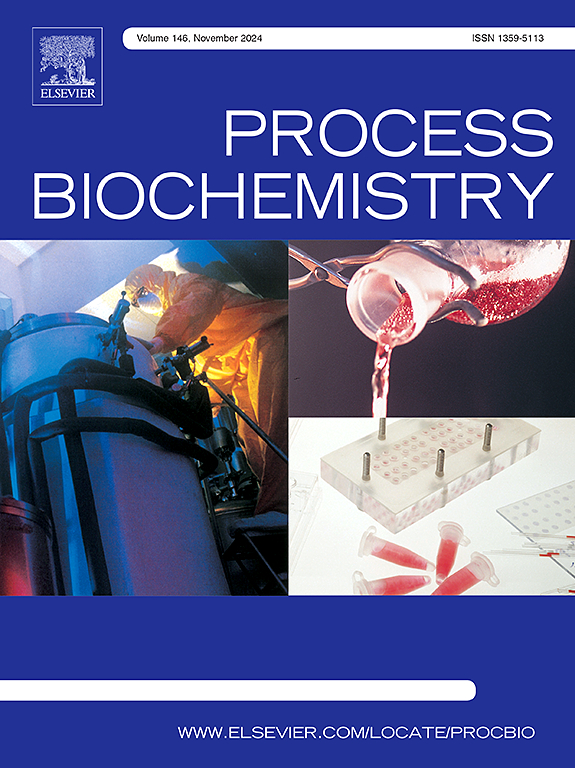Trehalose-powered membraneless enzymatic fuel cell based on flexible alginate composite hydrogel bioelectrodes
IF 3.7
3区 生物学
Q2 BIOCHEMISTRY & MOLECULAR BIOLOGY
引用次数: 0
Abstract
This study investigated the design and optimization of a membraneless flexible gel-type enzymatic biofuel cell (EBFC) driven by trehalose for electricity generation. The EBFC was fabricated by printing bioelectrodes on non-woven fabrics encapsulating the enzymes in alginate composite hydrogel, and a conductive carbon layer was incorporated to improve electrochemical transfer. Optimization of trehalase loading revealed that a maximum power density of 4.69 μW/cm2 was obtained with a trehalase loading of 3.5 U per 6 mL of 50 mM trehalose. Further optimization of the GOx-to-hydrogel ratio in the anode resulted in a maximum power density of 7.45 μW/cm2. Evaluations at different trehalose concentrations demonstrated proportionate increases in voltage, power density, and current density, achieving the highest power density of 10.74 μW/cm2 at 100 mM. Connecting three EBFCs in series considerably enhanced power output, achieving a four-fold improvement in power density to 41.32 μW/cm2 compared to a single cell. The EBFC also generated power from cockroach hemolymph, with a maximum power density of 8.05 μW/cm2. These results highlight that this flexible gel-type EBFC has the potential to be employed in the development of both trehalose-powered and glucose-powered EBFC.
求助全文
约1分钟内获得全文
求助全文
来源期刊

Process Biochemistry
生物-工程:化工
CiteScore
8.30
自引率
4.50%
发文量
374
审稿时长
53 days
期刊介绍:
Process Biochemistry is an application-orientated research journal devoted to reporting advances with originality and novelty, in the science and technology of the processes involving bioactive molecules and living organisms. These processes concern the production of useful metabolites or materials, or the removal of toxic compounds using tools and methods of current biology and engineering. Its main areas of interest include novel bioprocesses and enabling technologies (such as nanobiotechnology, tissue engineering, directed evolution, metabolic engineering, systems biology, and synthetic biology) applicable in food (nutraceutical), healthcare (medical, pharmaceutical, cosmetic), energy (biofuels), environmental, and biorefinery industries and their underlying biological and engineering principles.
 求助内容:
求助内容: 应助结果提醒方式:
应助结果提醒方式:


